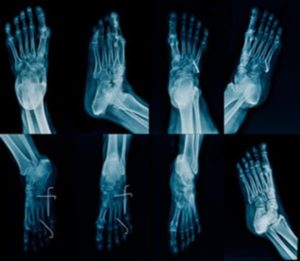Bunions are often the result of prolonged stress on the joint in the big toe. They can be extremely painful, but shoe modifications, splints, and pain medications provide relief in most cases. If these measures don’t help, your doctor may suggest bunion removal surgery (bunionectomy). If you’re considering bunion surgery, knowing the surgical options and what to expect during and after the surgery can help you decide.
General Candidate Guidelines for Bunion Surgery

You may need bunion surgery if you’re experiencing severe foot pain even when wearing flat, comfortable shoes. Or if rest and pain medications don’t resolve chronic swelling and inflammation in the big toe. Other reasons for surgery include:
- Toe deformity
- Drifting in of the big toe toward the small toe
- Not being able to bend and straighten the big toe
Surgical Options
There are different surgical procedure options to address the different sizes, shapes, and severity of bunions. Bunion surgery is not a cosmetic procedure. In most cases, bunion surgery includes correcting the alignment of the bone and repairing the soft tissues around the big toe. Your doctor will talk with you about which surgery is best to correct your bunion and the risks. Below is a breakdown of procedures by severity and joint condition:
- Mild bunion: For this type of surgery, the surgeon may remove the enlarged portion of bone and realign the muscles, tendons, and ligaments surrounding the joint.
- Moderate bunion: The surgeon may cut the bone and shift it to its proper position. They may also need to reposition the surrounding tendons and ligaments.
- Severe bunion: Surgery may involve removing the enlarged portion of the bone, cutting and realigning the bone, and correcting the position of the tendons and ligaments.
- Joint is damaged beyond repair: As is often seen in arthritis, irreparable damage can occur to the joint. In these cases, surgeons fuse the joints, allowing the bones to heal together and eliminate movement and pain. Occasionally, it’s possible to reconstruct the joint using joint replacement implants.

Surgery Overview
Nowadays, bunion surgery is mostly done on an outpatient basis and varies based on your surgeon’s practices and type of surgery. The surgery is typically performed under ankle block anesthesia. This means you are awake, but your foot is numb. Occasionally, surgeons also use general anesthesia.
Your healthcare provider will give you specific instructions for caring for your foot and controlling pain at home during the first few weeks after surgery. You may also need to wear a special surgical shoe or cast to protect your foot. Your surgeon will advise you on how long to wear it and if you’ll need any physical therapy or other exercises during recovery. Although there’s no guarantee, most patients experience a reduction of foot pain and improvement in the alignment of their big toe following bunion surgery.

Endeavor Clinical Trials has upcoming research studies that include bunion removal surgery. See if you qualify today! Apply through our website or contact us at (210) 949-0807.
Sources:

